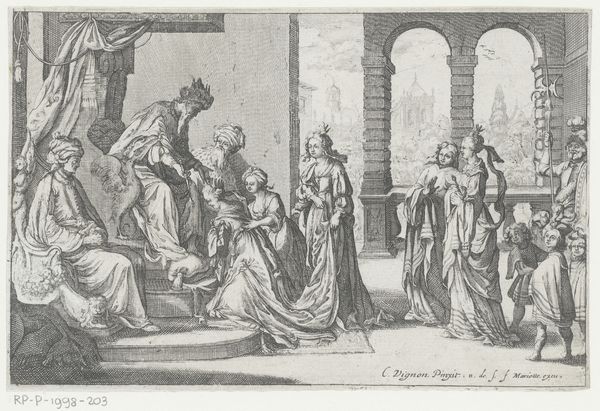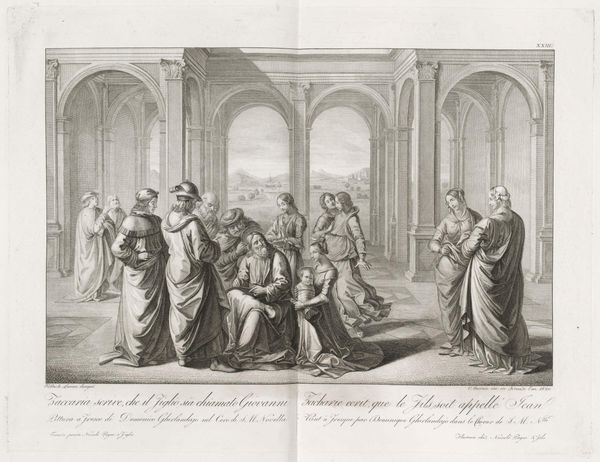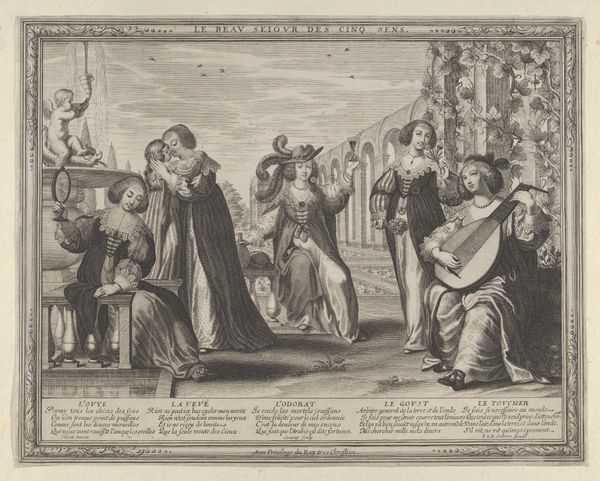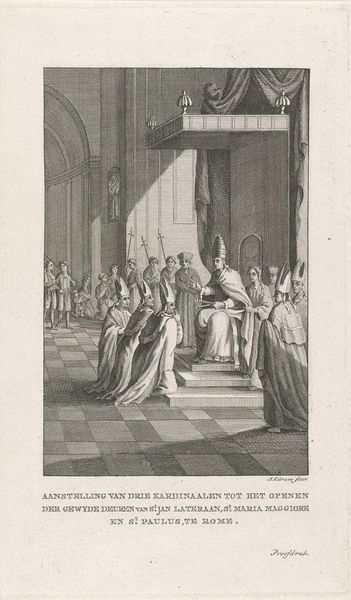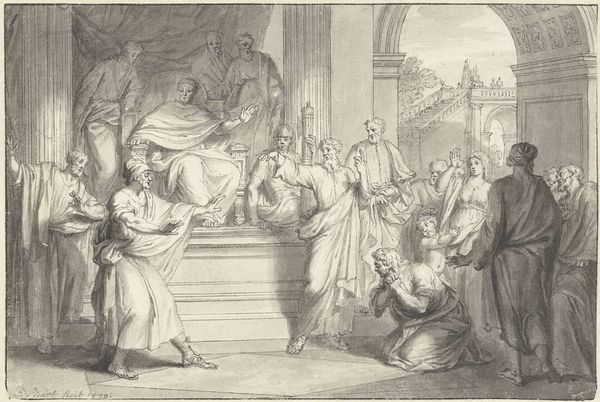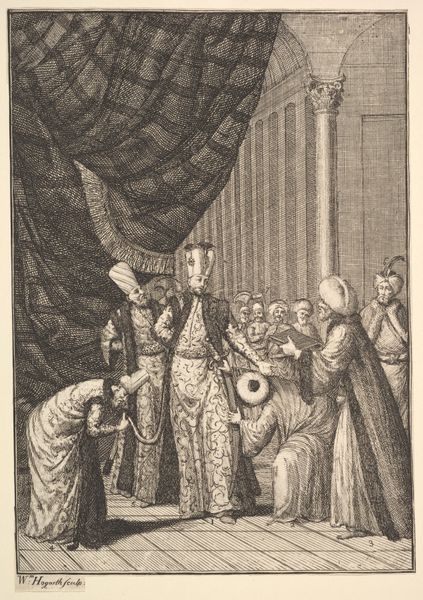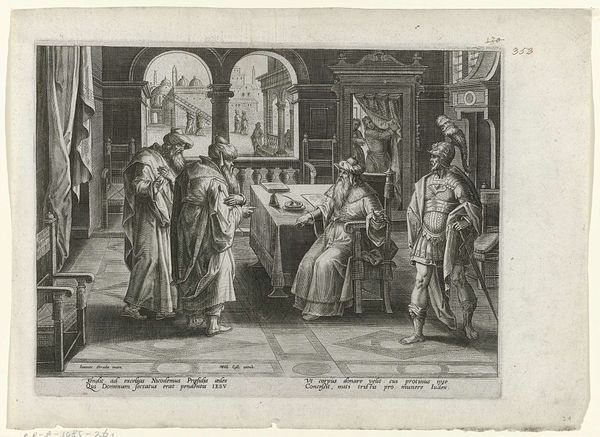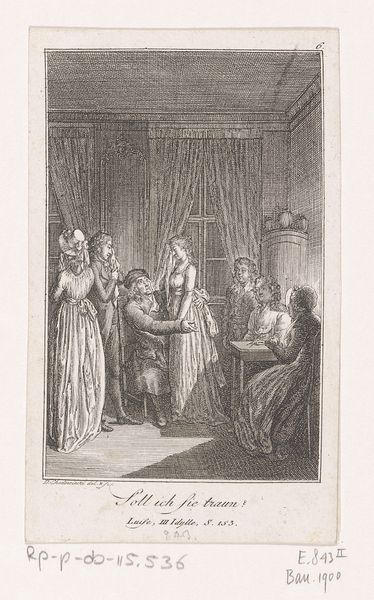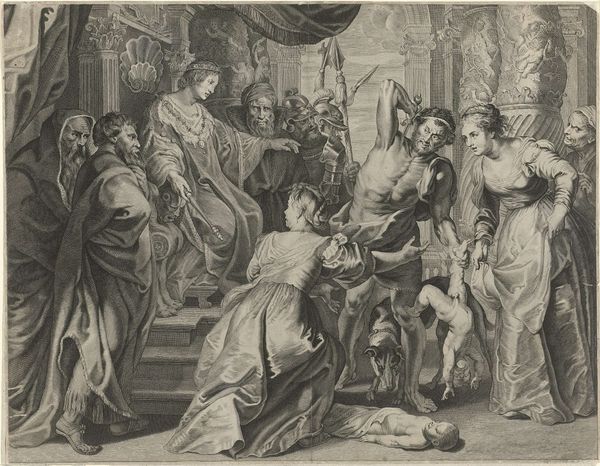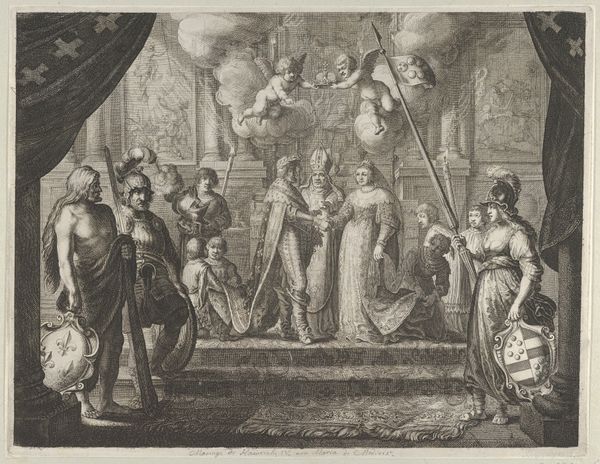
drawing, print, engraving
#
drawing
#
allegory
#
baroque
# print
#
figuration
#
genre-painting
#
history-painting
#
engraving
Dimensions: Sheet: 8 3/4 × 12 11/16 in. (22.2 × 32.2 cm)
Copyright: Public Domain
Editor: Here we have Abraham Bosse's engraving, "The Foolish Virgins Rejected," created sometime between 1630 and 1640. There’s something about the scene that feels theatrical, almost as if the figures are posed on a stage. The contrast between the darkness of the engraving and the subject matter creates this heavy, solemn mood, don't you think? What's your interpretation of this piece? Curator: That's a great start. The "stage" you're sensing speaks to the very *performance* of piety and social standing back then, wouldn’t you say? Bosse was excellent at capturing the nuances of his time. What jumps out at me is how starkly the narrative is portrayed; some are let into this illuminated space of columns and light, others cast into shadow. I wonder, does this contrast resonate with modern viewers who may have mixed experiences with faith? Editor: Absolutely. The sharp division is so palpable. What do you think Bosse wanted to communicate by making some figures literally step into the light? Curator: Perhaps he was exploring the complex dynamics of human virtue, not merely passing judgment, right? The contrast between the fashionable attire and the biblical lesson sparks all sorts of thoughts... Did wealth play a role in acceptance or rejection? Or is Bosse illustrating how material comforts distract us from the divine? Think about that contrast for a second, let it simmer in your thoughts as you imagine living in this very era. What textures and ideas come to mind? Editor: That's such an interesting take – considering wealth as a potential barrier, not necessarily a blessing! It adds so many layers to what seems like a straightforward cautionary tale. I'll definitely be chewing on that for a while. Thanks for shedding a different light on it, pardon the pun! Curator: The pleasure is mine, and puns are always encouraged! It is vital we appreciate both the artistic intention, as well as our contemporary understanding.
Comments
No comments
Be the first to comment and join the conversation on the ultimate creative platform.
